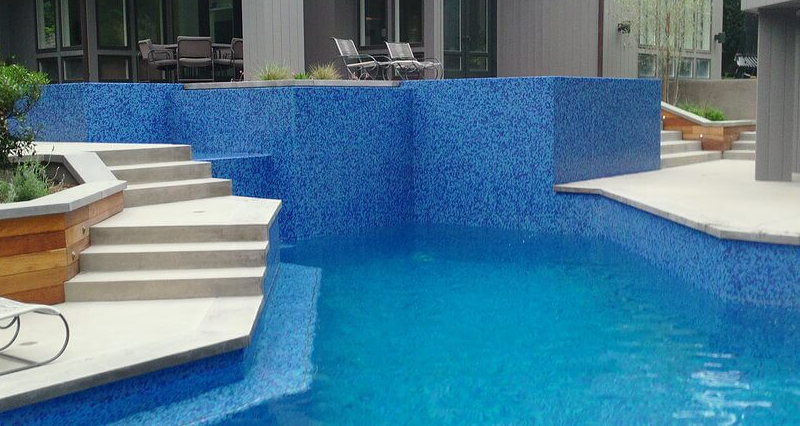- Home
- Open & Close
- Open Inground Pool
How To Open An Inground Pool In 10 Steps
Spring is in the air!! Birds are chirping. Flowers are blooming. Your pool is almost as green as your grass and it's time for your annual pool start up. The fun of pool season is right around the corner. But of course before you swim you need to open your pool. Pool opening might not be the most enjoyable aspect of having a pool, but it's well worth the time and effort to have that perfect Summer you've been thinking about for the last few months.
A pool opening in the U.S. normally ranges between $150-$300. Some places in the North Eastern part of the U.S. can charge up to $600. You can save a little time and money by doing some or all of the work yourself. From personal experience, here's a good list for you to follow. It's pretty much the opposite of a swimming pool closing.
These are the steps I took when I opened pools for people in Oregon. Now I take care of pools in Florida and clear them up after hurricanes. At the beginning, remember to allow some time for the water to balance out. Take it slowly and add only add one chemical at a time. Slow is smooth and smooth is fast.

Get Ready For Your Pool Start Up
We just don't jump in and start painting a room in our home, right? We have our prep work and we gather the tools and products that are needed to make the job successful. Paint, brushes, tape, drop cloth, extra rags, etc. And we wouldn't walk out to our pools without first gathering the proper tools, products, and equipment to make the job successful. Our prep work is over half the battle.
Start Up Chemicals
You might be tempted to run out to your local pool store and purchase a huge box of start up chemicals for your pool. Before you do that, I want to let you in on a little secret. The same chemicals you used to keep your pool balanced and perfect last swimming season are the exact same products you will need for your pool start up this season. Many of those pre-made pool opening boxes are expensive and half of the products you might not need. What's even easier and less expensive is to take your current pool chemical readings, then go out and buy the chemicals you need to adjust them.
Pool Opening Chemicals You Might Need
Every pool is different and has different needs. Your pool is not your neighbor's pool, so we can customize our pool's chemical needs accordingly. These are the most common pool opening chemicals that most pools will need.
- Chlorine (and lots of it).
- pH increaser, Borax, or Arm & Hammer Washing Soda.
- Alkalinity increaser or Arm & Hammer Baking Soda. A generic brand works just as well.
- pH and alkalinity decreaser such as muriatic acid or dry acid (sodium bisulfate).
- Calcium chloride to increase the pool water hardness.
- CYA/cyanuric acid. You can get this in either liquid or granular form.
- Metal sequestrant.
- PolyQuat 60 algaecide.
- Clarifier.
- Taylor K-2006 test kit.
How To Open An Inground Pool
If you're ready to open your inground pool by yourself this year, here we go. The biggest piece of advice I can give is to close your pool as late into the season as you can, and open your pool as early as you can. This will save you tons of time and money on your next pool start up.
1. Remove Water and Debris Off The Winter Pool Cover
The first step in starting up the pool is to remove all the water and debris from our pool cover. If there's a lot of standing water on the cover, use a submersible pool cover pump. After the water is removed from the pool cover, use a soft bristle broom to sweep off as much debris as you can. Never use a rake or anything sharp on your cover. A leaf blower is an excellent alternative. Waiting a couple of days to allow the leaves to dry will make this easier.
2. Remove Your Pool Cover
You will want to do this part carefully. Any muck and debris that's still on the pool cover can fall into the water which will cause more of a clean up later on. It's best to have a helper during this process.
3. Clean Your Pool Cover and Store It
After the pool cover has been removed, lay the cover out on a nearby area and spray it off with a garden hose (not a pressure washer). This is an excellent time to inspect the cover to make sure it held up through the Winter months. Looks for tears and holes.
Next, use water, a mild soap, and a soft brush to wash your cover. You may also find a pool cover cleaner works well. Use your leaf blower to blow off excess water on the pool cover. After allowing the cover to fully dry, gently fold it up and store it in a dedicated bin that has a lid. A heavy duty plastic container with a lid works best. We don't want critters getting to our pool cover during the Summer.
4. Skim the Pool and Remove Debris
Using a wide mouth leaf rake, remove as much debris as you can. This will help out your filtration system so the larger debris won't clog up the lines. The more cleaning you do at this stage, the faster the rest of your pool start up process will go.
5. Remove Ice Compensator and Plugs
Walk around your pool and remove all the plugs from the returns and replace the eyeball or jet fittings in the return lines.
NOTE: Bubbles in the return is a sign that the lines were properly blown out during your pool closing.
Remove the ice compensator from your skimmer, remove the winter plugs from the bottom, and replace the skimmer basket and the skimmer lid.
6. Reinstall Your Deck Hardware
Time to gather up your accessories, inspect them for any rust or loose fittings, and re-install them. Now would be a good time to lubricate any moving parts and bolts and check for wear.
7. Pool Filter and Pump Motor Set Up
Reinstall the drain plug and pressure gauge on your filter. Reinstall the drain plug on the pump pot. Check all O-rings, lubricate them with a dedicated lube, and reinstall them. Of course you will want to replace them if needed. Install all needed and extra components such as your booster pump and chlorinator.
NOTE: Turn your multiport valve handle to “Filter".
Open your suction and return side valves to make sure your pump motor has an adequate water pull from the pool. To prime the pump, fill the pump pot with water, then reinstall the pump pot lid. This would be a good time to check the integrity of the pot lid and the O-ring and replace if needed.
Turn your pump motor on and bleed the air out of the filter. Watch for debris going back into the pool through the returns. If antifreeze was used in the lines, it will be expelled through the returns. Pool antifreeze is non-toxic and will be diluted and filtered out.
8. Shock Your Pool
Test your chemicals to make sure they're in the proper ranges. pH is 7.2 - 7.8, alkalinity 80 ppm - 120 ppm, calcium hardness 150 ppm - 250 ppm, and CYA is 30 ppm - 50 ppm. Shocking a pool is a process of maintaining a high free chlorine level long enough to kill the algae and bacteria in our pools. It's not a product we buy.
And please be very careful when handling pool chemicals. They can be hazardous if not properly handled. Read the manufacturer's instructions on the container or package and never mix different chemicals together.
9. Let's Filter!!
Chemicals balance the water and the filter clears the water. Make sure your filter is properly working and don't turn it off until the water clears. At the very tail of the process, you can use a clarifier to help clump the smaller particles together for easier filtering.
10. Clean and Vacuum
Once the water clears, you'll be able to vacuum the remaining debris from the bottom of your pool. If the pool is exceptionally dirty, you will want to vacuum to WASTE. If you choose this option, add a couple of inches of water to your pool. Vacuuming to waste will drain the water out of the pool. Remember to backwash your filter or clean the cartridge filter after vacuuming.
Scoop out any remaining debris with your leaf rake.
Pool Start Up Is Not Scary
Keep filtering for a couple more days after the water clears. Retest the water using the Taylor K-2006 kit, TF-100, or take a pool water sample to a trusted local pool store for analysis. Once everything checks out and it looks good, your pool is ready to swim in!
